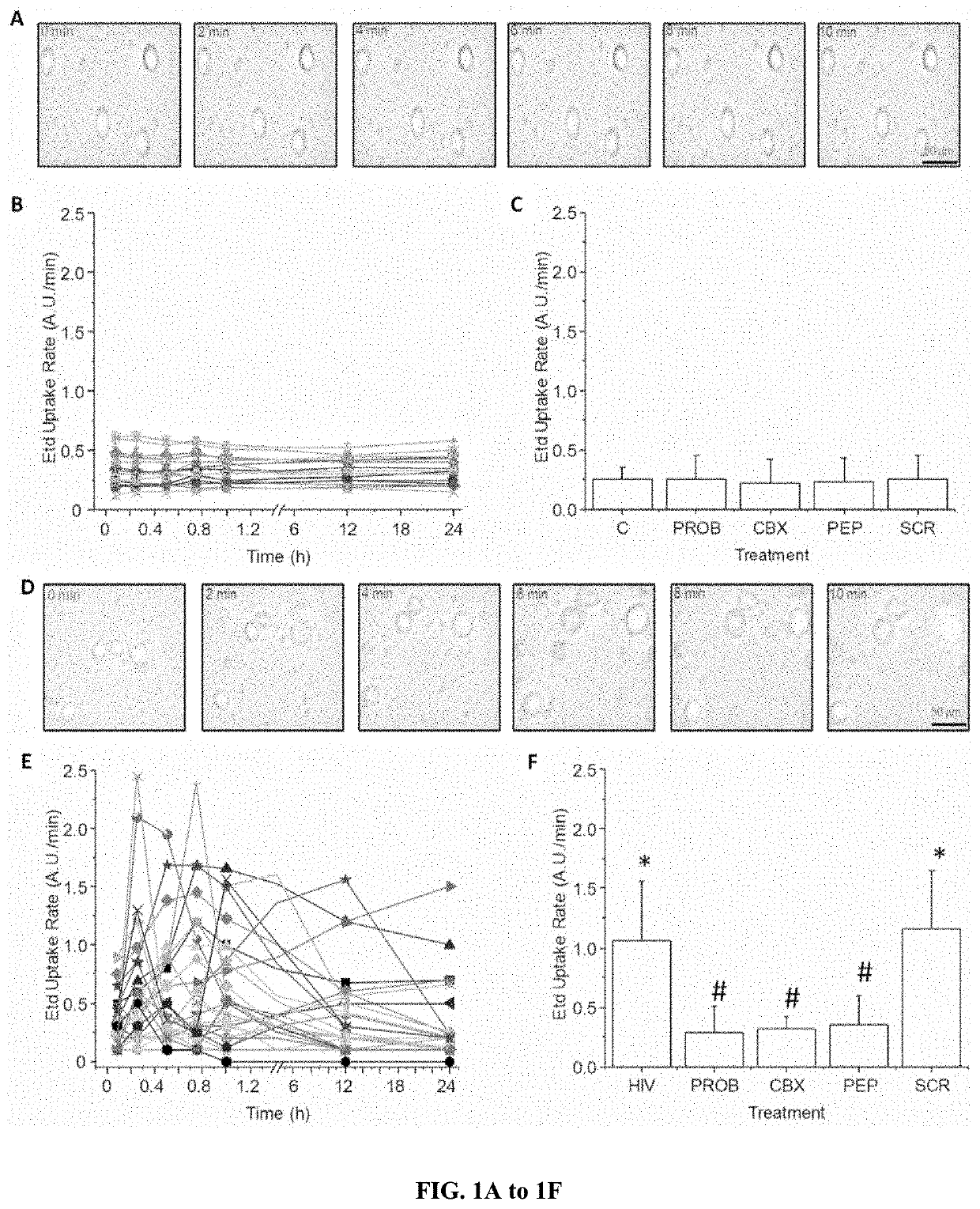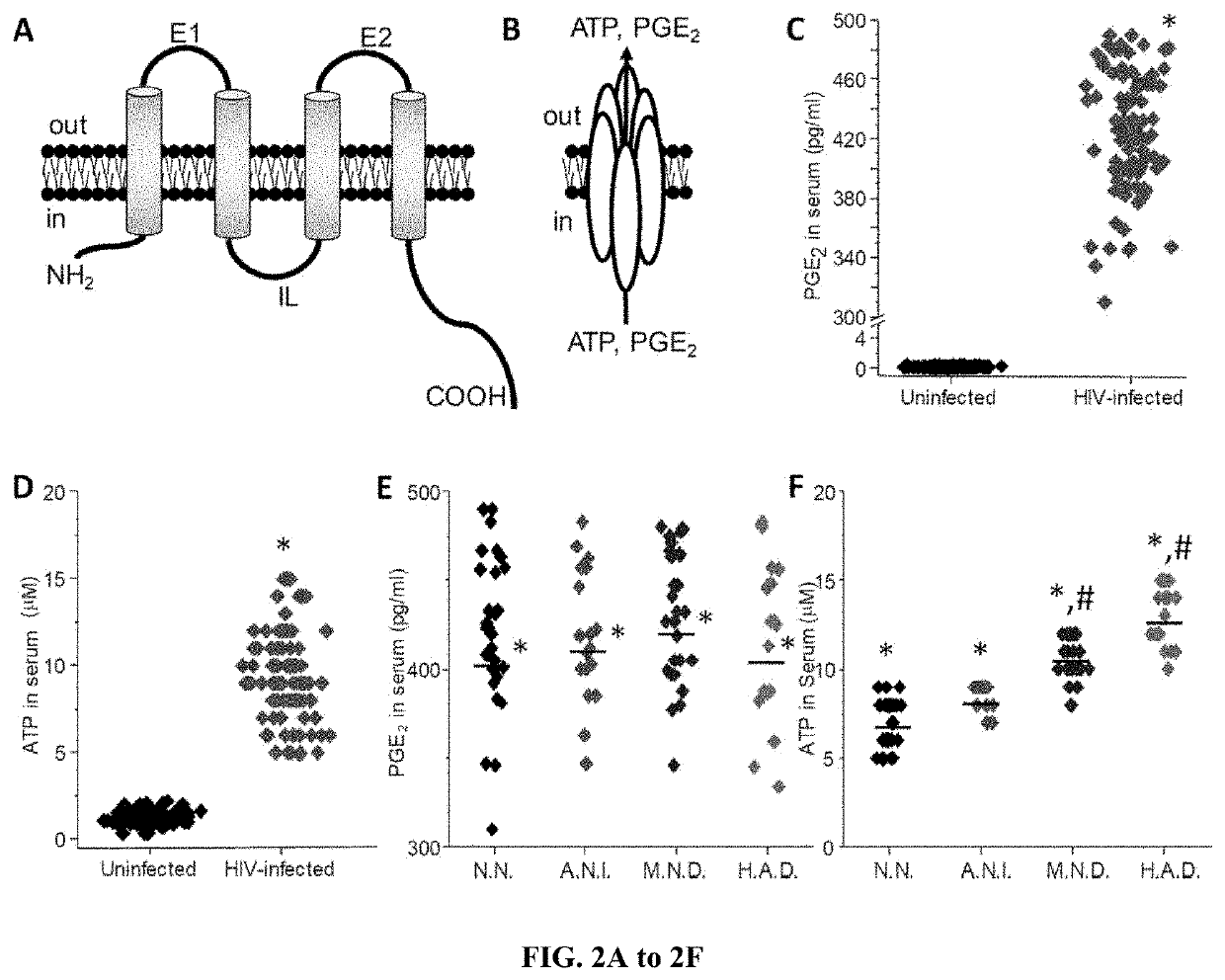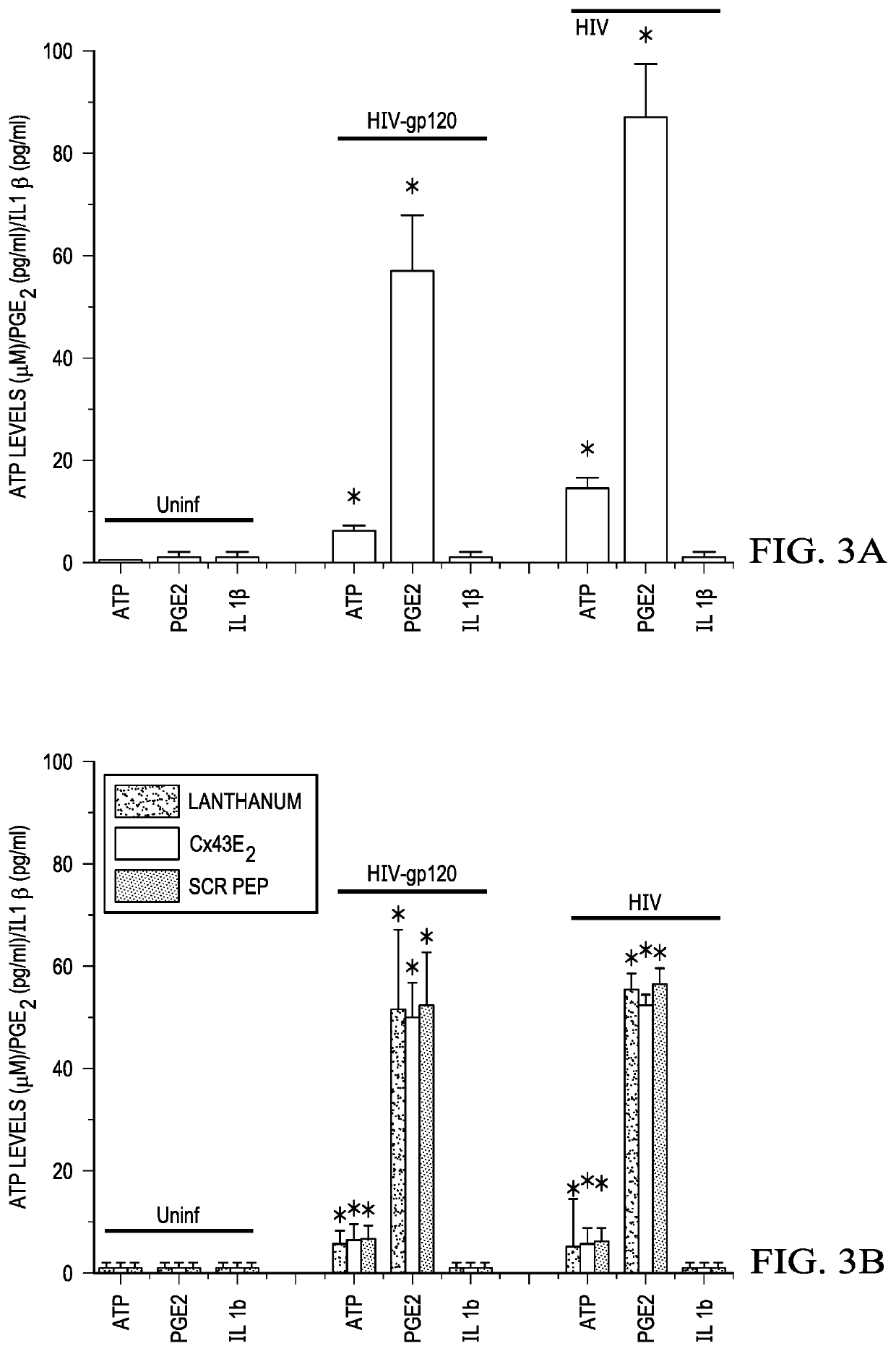Methods of treating neurodegenerative diseases by targeting the purinergic and/or adenosine receptors
a technology of purinergic and/or adenosine receptors, applied in the field of cognitive impairment, can solve problems such as inability to detect early onset of brain damag
- Summary
- Abstract
- Description
- Claims
- Application Information
AI Technical Summary
Benefits of technology
Problems solved by technology
Method used
Image
Examples
example 1
[0052]Methods to detect and intervene in the ATP / ADP / AMP and adenosine pathways to prevent the onset of CNS compromise and cognitive disease. The present disclosure provides several methods to detect, quantify, and to create a custom treatment to block, stimulate or reach an equilibrium among ATP and its sub-products to prevent and reduce the devastating consequences of dementia and associated cognitive disease. The method can be divided into several sections:[0053]Detection and quantification of ATP and its sub-products as a marker of CNS compromise and the basis to generate a treatment to prevent brain damage;[0054]A treatment to prevent ATP secretion by targeting pannexin channels;[0055]A treatment, compound(s) or enzymatic, to reduce the high levels of ATP associated with CNS damage:[0056]Detection and treatment to increase adenosine levels;[0057]A blocking or stimulating compounds, targeting ATP and its sub-product receptors, to prevent endothelial and astrocyte activation; and...
example 2
[0067]Blocking pannexin / connexin hemichannels to reduce ATP and their sub-product secretion. It has been shown in several neurological diseases indicated that pannexin-1 channels become open, resulting in the release of several intracellular second messengers that amplify inflammation, blood-brain barrier disruption, and CNS compromise. Thus, blocking the opening of pannexin channels with siRNA, peptides, or chemicals (probenecid and others) can reduce and prevent the toxic effects of pannexin-1 channel opening (see table 1).
TABLE 1Pannexin-1 blockersUsed inCompound familyTargetHumansCarbenoxolonePanx-1Yes, gastric ulcerFlufenamic acidPanx-1Yes, it reduces plateletaggregation.COX mechanismProbenecidPanx-1Yes, gout treatmentBrilliant Blue FCFPanx-1No10Panx-1 peptidePanx-1NoTat-Panx-1308Panx-1NosiRNA or similar to Panx-1Panx-1NoTenofovirPanx-1Yes, liver and skin fibrosisTrovafloxacin mesylatePanx-1Yes, antibioticMefloquinePanx-1Yes, antimalarial
[0068]In some embodiments, a polypeptide...
example 3
[0079]Inducing degradation of ATP in the circulation to prevent blood-brain barrier and nervous system compromise. The data shows that circulating levels of ATP increased in correlation with signs and symptoms of brain damage and cognitive disease. The inventors demonstrated that levels of circulating ATP compromise BBB and cognition. Thus, reducing the levels of ATP can prevent BBB disruption and neuronal / glial compromise. Currently, the treatments to speed up ATP degradation or alternatively blocking ATP synthesis via ATP synthase inhibition are related to bacterial / fungal products as well as recombinant enzymes that can reduce circulating levels of ATP. More than 250 natural and synthetic inhibitors have been classified to date, with reports of their known or proposed inhibitory sites and modes of action. Selected ATP synthase inhibitors are shown in Table 2. ATP is a crucial factor in inflammation, cell differentiation, tumorigenesis, and danger signal [7-21]. Thus, reducing the...
PUM
| Property | Measurement | Unit |
|---|---|---|
| Fraction | aaaaa | aaaaa |
| Fraction | aaaaa | aaaaa |
| Stability | aaaaa | aaaaa |
Abstract
Description
Claims
Application Information
 Login to View More
Login to View More - R&D
- Intellectual Property
- Life Sciences
- Materials
- Tech Scout
- Unparalleled Data Quality
- Higher Quality Content
- 60% Fewer Hallucinations
Browse by: Latest US Patents, China's latest patents, Technical Efficacy Thesaurus, Application Domain, Technology Topic, Popular Technical Reports.
© 2025 PatSnap. All rights reserved.Legal|Privacy policy|Modern Slavery Act Transparency Statement|Sitemap|About US| Contact US: help@patsnap.com



